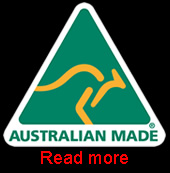Understanding the Corona Virus?

The World Health Organisation has declared COVID-19 to be a pandemic4. The symptoms of COVID-19 appear within two to 14 days after exposure and include fever, cough, a runny nose and difficulty in breathing.
How does the disease spread?
It primarily spreads through the respiratory droplets of infected people. If a person touches a surface or object that has been infected by the virus and then touches his own mouth, nose, or eyes, he may get infected.
Who is affected?
While people of all ages can be affected by the disease, people aged 80 and above are at the highest risk of dying due to COVID-19, according to case records analysed by the Disease Control and Prevention Centre in China and South Korea.
What are the symptoms?
The guidelines for early recognition of COVID-19 patients are those who come in with Severe Acute Respiratory Infection (SARI) who also have a history of foreign travel or close contact with another COVID-19 patient.
As per the guidelines, “COVID–19 may present with mild, moderate, or severe illness; the latter includes severe pneumonia, ARDS [Acute Respiratory Distress Syndrome], sepsis and septic shock.”
How can it be detected?
The virus can be detected using a PCR test. A PCR or polymerase chain reaction test is DNA-based and can quickly tell if someone harbours the virus.
What is the treatment?
There is no current evidence from randomised controlled trial to recommend any specific treatment for suspected or confirmed COVID- 19 patients. No specific anti-viral are recommended for treatment of those suffering from respiratory.
Protecting yourself against COVID-19

Washing with soap
Washing with water without using soap helps reduce the number of microbes but does not remove most of the virus and bacteria completely.
Using soap, therefore, becomes far more effective in removing microbes.
Viruses such as coronavirus, influenza-causing viruses, Ebola, Zika have their genetic material encased in a layer of fat called the lipid envelope.
Alcohol-based hand sanitisers
Like soap, the alcohol present in hand sanitisers dissolve the lipid envelope, thus inactivating the virus. To be effective, the sanitisers should contain at least 60% alcohol.
Using a mask
Medical masks help prevent the spread of coronavirus infection.
Even the World Health Organization (WHO) says wearing a medical mask is “one of the prevention measures to limit spread of certain respiratory diseases, including novel coronavirus (SARS-CoV-2), in affected areas”.
Social distancing
The WHO says that you should maintain at least 1 metre (3 feet) distance between yourself and anyone who is coughing or sneezing. This is because when someone coughs or sneezes, they spray small liquid droplets from their nose or mouth which may contain virus. “If you are too close, you can breathe in the droplets, including the
COVID-19 virus if the person coughing has the disease,” says the WHO.
Avoid touching eyes, nose and mouth
Hands can pick up viruses as they come in contact with many surfaces. It can then transfer the virus to your eyes, nose or mouth. From there, the virus can enter your body and can make you sick.
Practise respiratory hygiene
Cover your mouth and nose with your bent elbow or tissue when you cough or sneeze. Then dispose of the used tissue immediately.
Some common queries answered

Are there differences between symptoms caused by the flu and COVID-19?
When you have fever with a cough which is complicated by breathlessness, it is a symptom of Coronavirus infection and you must call your doctor to rule it out.
How effective are thermal scanners in detecting people infected with the new coronavirus?
Thermal scanners are effective in detecting people who have developed a fever because of infection with the new coronavirus.
Can a person exposed to Coronavirus transmit it to others if he/she uses a swimming pool?
Highly unlikely. Chlorination of swimming pools to recommended levels can certainly inactivate any virus, including COVID-19.
Should people avoid eating meat-based food to prevent transmission?
It is a respiratory virus and not a food-borne one. Coronavirus has nothing to do with food or pet animals or eating chicken and mutton.
Is there a link between a person’s immunity and COVID-19 transmission?
Coronavirus is one of the weakest family of viruses. The deaths caused so far, or people affected could have been ones with less immunity like children or the elderly. Sometimes, the virus enters a person’s lungs and causes pneumonia.
Are there any home remedies to treat COVID-19?
Home remedies and treatment other than allopathy is not proven science. The best thing is precaution only. You must keep away from a patient who coughs and sneezes.
Are antibiotics effective in preventing and treating the new coronavirus?
No - antibiotics do not work against viruses, only bacteria. The new coronavirus (2019-nCoV) is a virus and, therefore, antibiotics should not be used as a means of prevention or treatment.
Do vaccines against pneumonia protect you against the new coronavirus?
No. Vaccines against pneumonia, such as pneumococcal vaccine and Haemophilus influenza type B (Hib) vaccine, do not provide protection against the new coronavirus. The virus is so new and different that it needs its own vaccine.
Myths around COVID-19

Here are some other myths and the WHO’s response to them:
Myth 1:
Consuming garlic, curry leaves or cow’s urine would treat or protect one from the disease.
The World Health Organisation has busted such misleading claims. On garlic, WHO said it is a healthy food that may have some antimicrobial properties but there is no evidence that it has prevented people from contracting the 2019 nCoV.
Myth 2:
“COVID-19 virus can be transmitted in areas with hot and humid climates”
From the evidence so far, the COVID-19 virus can be transmitted in ALL AREAS, including areas with hot and humid weather.
Myth 3:
The new coronavirus can be transmitted through mosquito bites.
To date there has been no information nor evidence to suggest that the new coronavirus could be transmitted by mosquitoes.







